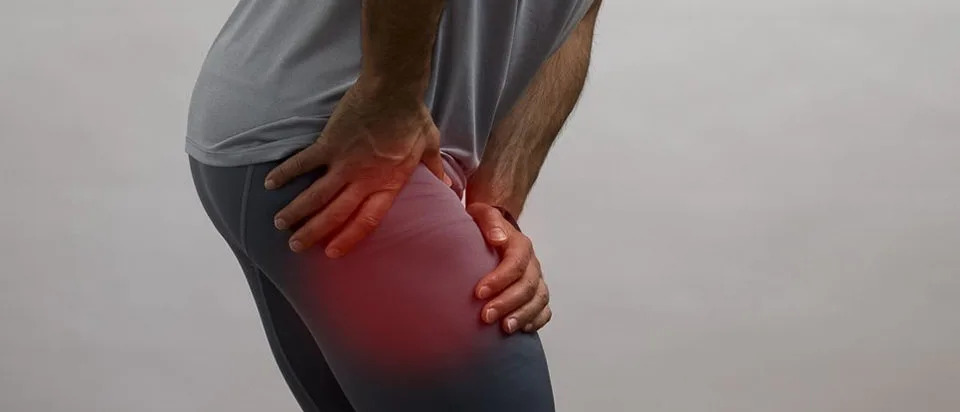Sacroiliac (SI) joint dysfunction is a frequently overlooked source of lower back and pelvic pain in the UK. Despite being relatively small, the sacroiliac joints (one on each side of the lower spine) play a critical role in distributing load and providing stability between the spine and pelvis. When they become misaligned, overused, injured, or otherwise dysfunctional, they can lead to substantial discomfort and mobility issues.
What is Sacroiliac Joint Dysfunction?
The sacroiliac joints don’t normally permit much motion: they are designed more as shock absorbers than as highly mobile joints. However, dysfunction arises when the joint moves abnormally — either by too much movement (hypermobility) or too little (hypomobility). This disturbance can irritate surrounding ligaments or joint surfaces, leading to pain and discomfort. Proback Advanced Back Care
Often, SI joint dysfunction is not a standalone issue. Rather, it is secondary to another underlying problem—such as poor alignment of the lumbar spine, leg-length discrepancy, or pathology in adjacent joints—that ultimately disturbs the joint’s normal mechanics. Proback Advanced Back Care
Causes and Risk Factors
A range of factors may contribute to sacroiliac joint dysfunction:
-
Structural misalignment in the lower (lumbar) spine
-
Excessive use or repetitive stress to the SI joint
-
Injury or trauma that stretches or damages ligaments
-
Post-pregnancy or childbirth changes, which can strain ligaments
-
Leg-length discrepancy, causing asymmetrical loading
-
Faulty biomechanics or joint problems in the knee or ankle, altering gait and force distribution Proback Advanced Back Care
Understanding the root cause is vital, because if only the SI joint is treated without addressing the underlying driver, symptoms may recur.
Identifying the Symptoms
SI joint dysfunction can mimic other conditions—especially lumbar disc issues or sciatica—so a thorough assessment is essential. Common symptoms include:
-
Pain or aching in the buttock, groin, or side of the thigh
-
A deep, dull sensation rather than sharp pain
-
Because the condition is joint-based, tingling or numbness is usually absent, which helps distinguish it from nerve root compression disorders like sciatica Proback Advanced Back Care
Because symptoms overlap with other spinal conditions, many patients may be misdiagnosed until a specialist examination pinpoints the SI joint.
Diagnosing SI Joint Dysfunction in the UK
If you visit a specialist in the UK—whether a chiropractor, physiotherapist, osteopath or orthopaedic consultant—the diagnosis will typically begin with:
-
History & Symptoms Review – discussing onset, aggravating/relieving factors, and previous injuries.
-
Physical Examination – special provocative tests (e.g. FABER test, compression/ distraction maneuvers) to isolate SI joint pain.
-
Imaging (if needed) – X-rays or advanced scans may exclude other spinal or pelvic pathologies.
ProBack, for instance, includes such examinations (and X-rays if necessary) as part of an initial consultation. Proback Advanced Back Care
Treatment Options in the UK Setting
Once a correct diagnosis is made, the goal is twofold: treat the symptoms and address the root cause. The therapeutic options may include:
-
Shockwave Therapy (Radial Shockwave)
This modality can help to reduce pain and stimulate healing in surrounding tissues. ProBack uses shockwave therapy as one of its main tools for restoring lumbar and pelvic function. Proback Advanced Back Care -
K-Laser (Low Level Laser Therapy)
Laser therapy targets damaged tissue at the cellular level, boosting repair and reducing inflammation. Proback Advanced Back Care -
Prolotherapy & Prolozone Therapy
In cases where ligament damage is present—often in chronic sufferers—these therapies aim to stimulate ligament strengthening and repair. Prolozone is a variant combining prolotherapy with ozone for enhanced effect. Proback Advanced Back Care -
Spinal Decompression & Chiropractic Adjustment
Correcting misalignments in the lumbar spine or pelvis and alleviating undue forces on the SI joint is crucial. ProBack uses spinal decompression and tailored manipulation therapies. Proback Advanced Back Care -
Rehabilitation & Exercise
After initial relief of pain, specific stability and mobility exercises are prescribed to retrain muscles and maintain joint balance. These are customised per patient and usually commence after several treatment sessions. Proback Advanced Back Care+1
A combined, multi-modal approach usually yields the best outcomes, especially if underlying imbalances are addressed.
UK-Relevant Considerations & Accessibility
-
Cost & Insurance: In many private UK clinics, an initial consultation might cost around £110 (as per ProBack), with further treatment costs varying by modality. Proback Advanced Back Care Some patients may access parts of care under private health insurance or via physiotherapy provisions in NHS settings (though more specialised treatments may lie outside standard NHS coverage).
-
Referral Pathway: General Practitioners (GPs) may initially refer individuals to physiotherapists, orthopaedic specialists or pain clinics. If simple measures (manual therapy, exercise) fail, referral to specialist clinics offering advanced therapies becomes appropriate.
-
Credentials and Regulation: Always verify that practitioners are registered with relevant UK regulatory bodies (e.g. General Chiropractic Council, Health & Care Professions Council) to ensure safety and professionalism. ProBack highlights such accreditations on their site. Proback Advanced Back Care
-
Accessibility: For patients outside London or major metropolitan areas, travelling may be a factor. Some therapies (e.g. laser, shockwave) are increasingly offered in regional clinics, though availability can vary.
Outcomes & Long-Term Outlook
When managed properly, sacroiliac joint dysfunction exhibits good prognosis. ProBack cites up to 90 % success rate in alleviating patient symptoms. Proback Advanced Back Care However, long-term success depends heavily on correcting underlying causes, adherence to rehabilitation, and prevention of re-injury.
Those who neglect functional imbalances—such as unaddressed lumbar misalignment or leg-length discrepancy—often relapse. Therefore, a holistic view of the spine, pelvis, and lower limbs is essential for lasting relief.
Conclusion
Sacroiliac joint dysfunction is a common but often under-recognised contributor to lower back and pelvic pain in the UK. Proper diagnosis, identification of root causes, and multimodal treatment strategies are keys to effective management. Whether through shockwave, laser, prolotherapy, spinal manipulation or guided exercise, patients can often achieve significant relief—especially when treated by accredited specialists who take a whole-body, not just joint-based, approach.
If you’re experiencing persistent buttock, groin, or lower back pain—particularly without neurological symptoms—don’t hesitate to seek a second opinion from a SI joint-aware clinician. With the right care pathway, it’s possible to restore function and regain a pain-free life.







0 Comments